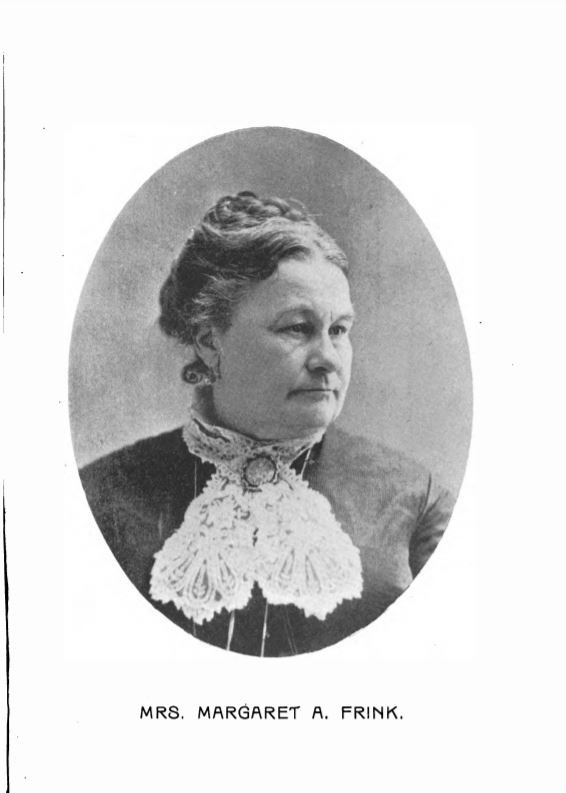Part of a series of articles titled Women's History in the Pacific West - Columbia-Pacific Northwest Collection.
Previous: Agnes Baker-Pilgrim
Next: Elizabeth Cant
Article

United States: Ledyard Frink, 1897.
Margaret Frink, who joined the Californian Gold Rush in the mid-nineteenth century, provides a glimpse of what life was like on the journey west through her meticulously kept diary. Americans on the East Coast and in the Midwest were keenly interested in stories about the Gold Rush. Personal letters of travelers were widely shared, and middle-class women and men penned accounts. Frink’s own description of daily life in 1850 was ultimately published after her death under the title Journal of the Adventures of a Party of California Gold-seekers. Her published diary and its treatment of western landmarks, like the City of Rocks, exemplify the “tender violence” of Anglo-American cultural production and the ways that such writings contributed to the erasure of Native nations in Anglo-American imaginations during the Gold Rush era.1
On April 25, 1817, Margaret Ann was born to Joseph and Mary Alsip in Frederick, Maryland.2 At twenty-two, she married Ledyard Frink, and the couple eventually settled in Martinsville, Indiana.3 When gold was discovered in California in January 1848, the news flew around the world enticing tens of thousands of Americans to travel west in hopes of striking it rich.4 The Frinks caught “gold fever” in December 1849 and made plans to move to California the following spring. Leaving Indiana on March 30, 1850, Margaret and Ledyard Frink traveled by wagon 2,418 miles to arrive in Sacramento, California on September 7, 1850, two days before California was admitted to the Union as the 31st state.5
According to the diary, the Frinks arrived on Wednesday, July 17 at the City of Rocks in Idaho. She described the place as “a stone village composed of huge, isolated rocks of various and singular shapes, some resembling cottages, others steeples and domes.” Perhaps for this reason, she preferred to call it “Pyramid City.” The couple spent little time at the City of Rocks, merely passing through in the middle of their day. However, it made enough of an impression for Margaret to call it “a sublime, strange, and wonderful scene – one of nature’s most interesting works.”6 While the City of Rocks acted as a noteworthy guidepost for Anglo-American colonizers on their westward march, it had been part of the homelands of multiple Native tribes, including Shoshone and Paiute peoples, for much longer.7 This longer Indigenous history and contemporary reality was not part of publications like Margaret Frink’s.
Like many gold-seekers who made their way to California, the Frinks found more stability and profit in catering to the residents of Sacramento than in searching for gold themselves. The couple went into the hotel business, where they became famous for serving free fresh milk.8 As Margaret explained, the milk “was a great attraction to men, many of whom had not tasted milk for one or two years.”9 When Margaret was writing her diary, she likely expected to revisit many of those landscapes on her trip back East laden with gold. However, the couple’s success in the hotel business, made possible by Margaret’s labor cooking and managing staff, prompted the Frinks to settle permanently in California.10 Margaret died on January 16, 1893 in Oakland, California at the age of 75.11
Published by her husband in 1897, Margaret Frink’s diary contributed to the triumphant narrative of US conquest of the American West. The diary’s focus on the couple’s challenges and feats during their journey and their ultimate success as hoteliers in California obscures the simultaneous dislocation and genocide of California Indians that made the Frinks’ achievements possible. Through her writing, Margaret Frink contributed to a cultural claiming of the American West for Anglo-Americans, including the City of Rocks.
Part of a series of articles titled Women's History in the Pacific West - Columbia-Pacific Northwest Collection.
Previous: Agnes Baker-Pilgrim
Next: Elizabeth Cant
Last updated: February 22, 2022